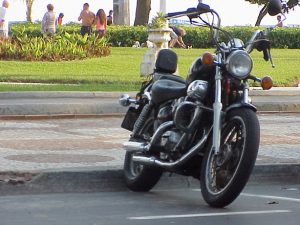Proximate cause is a legal concept that limits liability along the chain of causation. In order to establish that one person’s negligence is the proximate cause of another, a plaintiff must show there was:
- Defendant’s negligent act was the cause-in-fact (i.e., a reasonable certainty defendant’s actions caused the injury and injury would not have occurred but for defendant’s conduct);
- Defendant’s negligent act was the legal cause of injury (i.e., The injury was foreseeable/ of a type that a reasonable person would see as the likely result of his or her conduct).
Questions regarding proximate cause come up a lot anytime there are chain reaction collisions. However, the farther apart in space and time the crashes occur, and the more that happens in the meantime (i.e., superseding causes), the lesser the chance that an act of negligence will be deemed the proximate cause of another’s injury. This is what was seen in a recent case out of South Dakota involving a motorcycle accident wherein two bikers crashed on the same road, near the same curve, but a 40-minute time span apart. The two motorcyclists never collided with each other. Still, the second motorcyclist (plaintiff) alleged the negligence of the first (defendant) created a dangerous condition that was the proximate cause of his crash.
Although it might seem a bit left field, plaintiff might actually have succeeded on this theory, except for an intervening cause: State troopers had taken control of the scene.
According to court records, a motorcycle operator attending a local bike-friendly event, was reportedly intoxicated and speeding when he rounded a sharp curve and drove into a ditch off the side of the highway, killing him. There was no motorcycle debris that obstructed the roadway. That was around 4 p.m. Within eight minutes, troopers with the South Dakota Highway Patrol arrived on scene and began to perform accident reconstruction.
Decedent’s body was removed, though his bike remained off to the side of the road. Traffic continued to flow in both directions, though it was much slower than usual. One trooper was stationed on a curve just east of the scene to warn westbound drivers of the crash. However, there was no trooper situated to warn eastbound drivers.
Plaintiff was traveling eastbound on his motorcycle around 4:40 p.m. when he rounded the same curve that caused decedent to lose control. Plaintiff described the curve as a “blind corner.” Just as he rounded the other side, he was faced with a stopped mobile home in the roadway, just near the accident scene. There was traffic approaching from the other lane so plaintiff slammed on his brakes to avoid a motorcycle accident with the mobile home. He lost control of his motorcycle and crashed.
The second motorcyclist filed a lawsuit against the estate of the first, alleging defendant’s negligence in his own accident resulted in a dangerous condition that proximately caused plaintiff’s accident and injuries.
Estate sought summary judgment, arguing that while decedent was at-fault for his own accident, he could not be liable for plaintiff’s injuries because the highway patrol’s failure to warn eastbound traffic was a superseding cause of plaintiff’s crash. Trial court denied the motion, but the state supreme court reversed. The court noted that while the question of proximate cause has been treated as an issue of fact best decided by jurors, in this case, where a substantial amount of time had elapsed, there was no debris in the roadway and law enforcement had already taken over the scene, it should be decided as a matter of law.
Call Associates and Bruce L. Scheiner, Attorneys for the Injured, at 1-800-646-1210.
Additional Resources:
Howard v. Bennett, April 19, 2017, South Dakota Supreme Court
More Blog Entries:
Florida DUI Ignition Interlock Bill Gets State House Committee Approval, April 26, 2017, Motorcycle Accident Injury Lawyer Blog
 Florida Injury Lawyer Blog
Florida Injury Lawyer Blog





